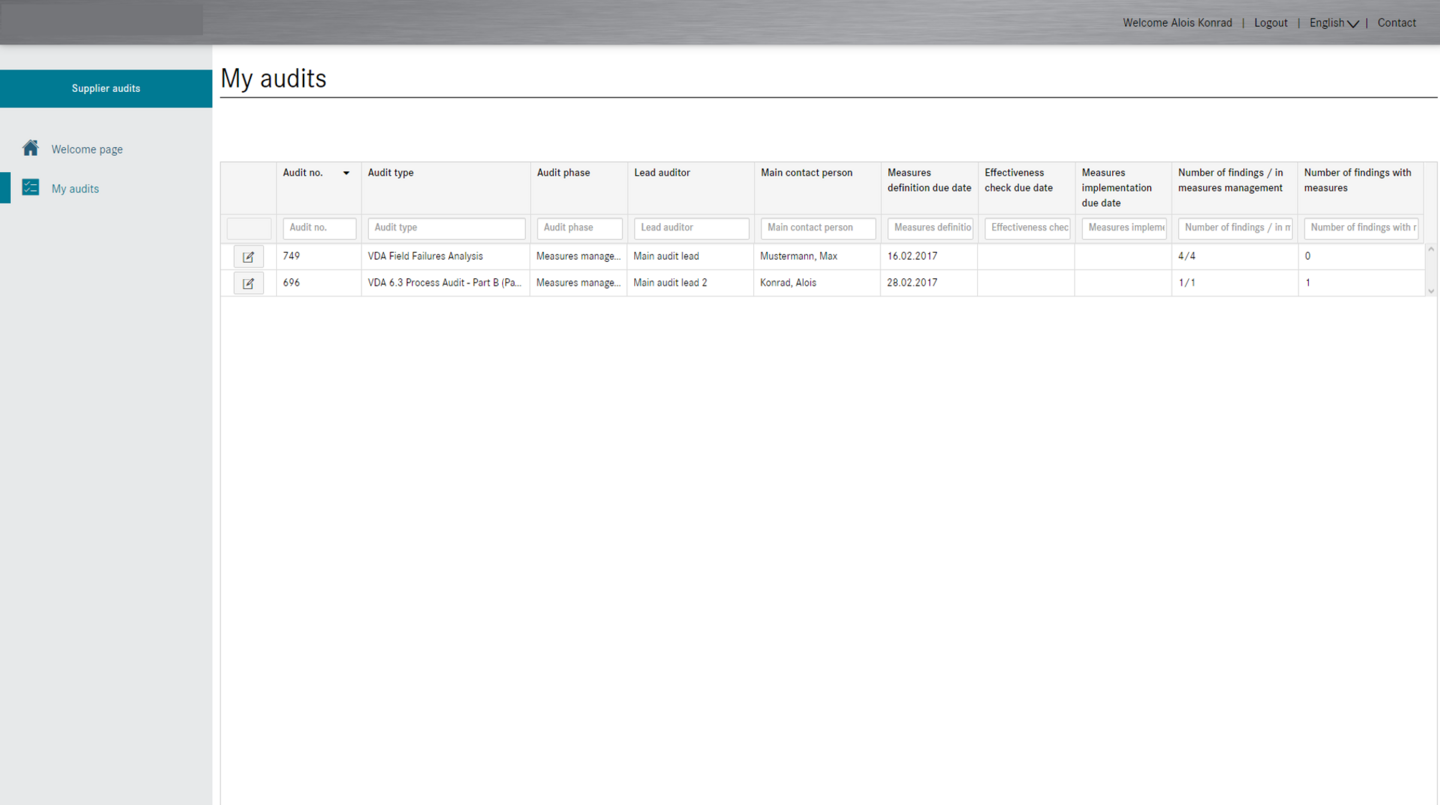QA optimisation with digital audits
Daimler AG
Web-capable auditing software
Entirely digitalised auditing process
The auditing application developed by DCCS maps the entire auditing process from audit planning to execution to the measure management process all the way to downstream controlling. It standardises the process of planning, executing and documenting audits and is designed for high data and access volumes. The tool significantly supports the execution of the requirement assessment and the central recording of findings, the creation of audit reports in the form of PDF documents as well as the audit-proof electronic storage of the same. Regular reviews and supplier assessments as well as internal processes and potential analyses are mapped. This is done, for example, according to standards such as ISO, VDA, PPF, PFA, TRL or LPA.
In addition, requirement catalogues for audits can be created by the customer, Daimler AG, and different audit types and evaluation schemes can be mapped – in several languages. Thus, the international company uses not only German and English, but also Chinese for its auditing catalogues. Thanks to it standardised technology, the software developed by DCCS can be effortlessly integrated into existing infrastructures and, for instance by means of an interface, linked to the Covisint Portal commonly used in the automotive industry. The application also simplifies audit processing for supply companies, for instance by effortlessly allowing for the management of measures to be implemented without media disruptions.

Offline audits? No problem!
Now, auditors can complete their audits even if they don’t have Internet access – all they need is a web browser and no additional software is required. The web-capable software is suitable for HTML5 and CSS3 standard browsers and was created as a single page web application.
One of the central requirements was the application’s offline usability, for instance to complete supplier audits on site, where one often has no Internet access. The application’s offline usability at high technical solution complexity is a particularly challenging task that only a few IT service providers are capable of completing. DCCS passed this challenge with flying colours, implementing lots of helpful support functions such as e-mail notifications, reminders, audit phase visualisation, data quality checks and context-specific help. Apart from its expertise in the development of offline web applications, DCCS also contributed its comprehensive process knowledge to the solution.
Central work and information platform
5,000 users currently use the tool that wowed users from the get-go. Not only does it standardise the entire process, making it more transparent, consistent and faster than ever before, but it additionally offers a central overview, for example of when and where what audits take place, as well as a complete, analysable history of all audits. The tool also reduces workload and processing time thanks to an electronic audit report authorisation process in the form of a revision-proof workflow including notifications and reminders. During the implementation of the application, comprehensible user guidance and an appealing design were also continuously taken into account.
The standardisation of the process helps reducing errors. Last but not least, the solution is technologically open for further audit types and thus future-oriented. In addition to auditing suppliers and internal processes, the audit software can also be adapted to support other areas, such as After-Sales.

Valid architectural concept for offline usability, implemented with agile methods
In parallel with a workshop phase lasting about four months, DCCS began developing the tool using the agile method. During larger sprint units of four weeks, user stories were created and checked by Daimler AG’s Procurement and Quality Management Departments, after which the results were tested and further improved. DCCS presented the first prototype about three months later. Dojo now serves as the front-end framework, while Java EE is used in the back-end. In the implementation of the tasks, DCCS not only demonstrated a high level of technical expertise but was also able to optimally adhere to the schedule. Thus, only about ten months passed from the order to the go-live to the finished solution.

Get in touch!
We are looking forward to your message
* Please fill out all fields
